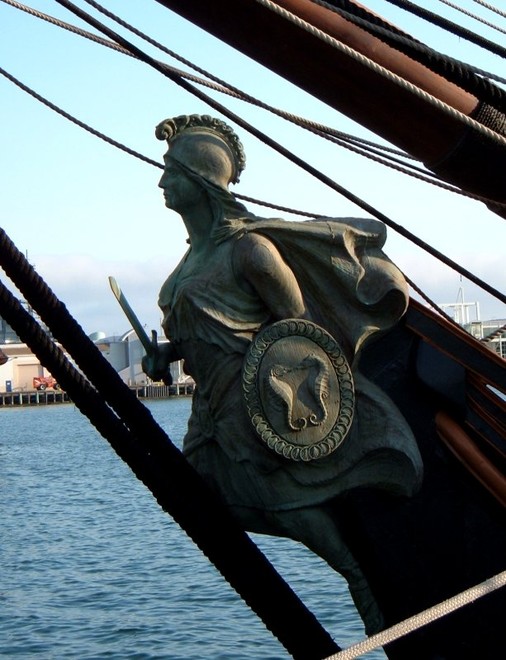Mysteries of terminology
by Jeni Bone on 5 Apr 2010

Perhaps the carved figurhead was supposed to drive the fouler sea beasts away? MIAA
We consistently refer to boats and ships as “she”, but how did the term originate?
Some wag on Wikipedia states that it’s because: “there is always a great deal of bustle around her; there is usually a gang of men about, she has a waist and stays; it takes a lot of paint to keep her good looking; it is not the initial expense that breaks you, it is the upkeep; she can be all decked out; it takes an experienced man to handle her correctly; and without a man at the helm, she is absolutely uncontrollable. She shows her topsides, hides her bottom and when coming into port, always heads for the buoys.”
Oh dear.
But according to 'Yarns of the Sea, Legends, Myths, and Superstitions', while females were considered bad luck at sea, mariners always used the pronoun “she” when referring to their ships, whether a tinnie, superyacht, man o'war, battleship, or a nuclear submarine. It is generally accepted that a ship is nearer and dearer to the sailor than anyone except his mother and provides all safety and sustenance at sea, so what better reason for the term?
On another note, why is the dining area referred to as the “mess” or “messdeck”? This common term refers to not just where military, police and firefighting personnel socialise and eat, but extends to most seagoing vessels.
'Mess' comes from the Old French 'mes,' meaning portion of food. “Mess” first appeared in English in the 13th century and was often used for cooked or liquid dishes in particular, as in the 'mess of pottage' (porridge or soup). By the 15th century, a group of people who ate together was also known as a 'mess' as was the room where they ate their meals.
Then there’s the heads. But we can discuss that one at another convenience.
If you want to link to this article then please use this URL: www.sail-world.com/68188